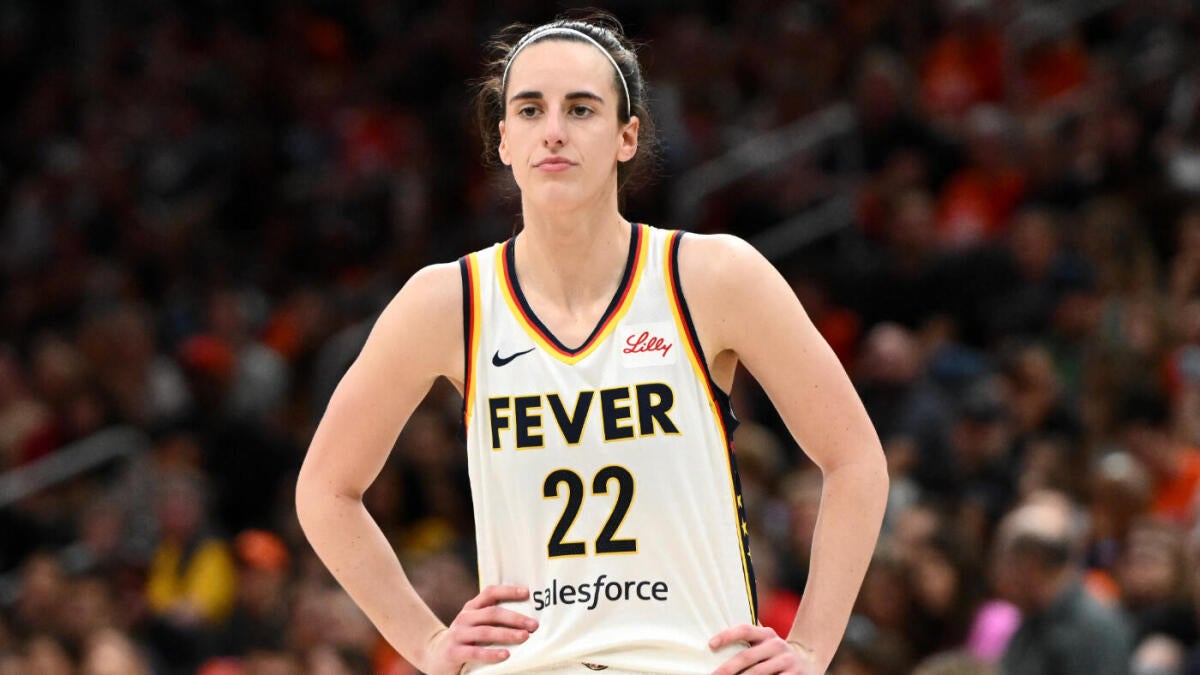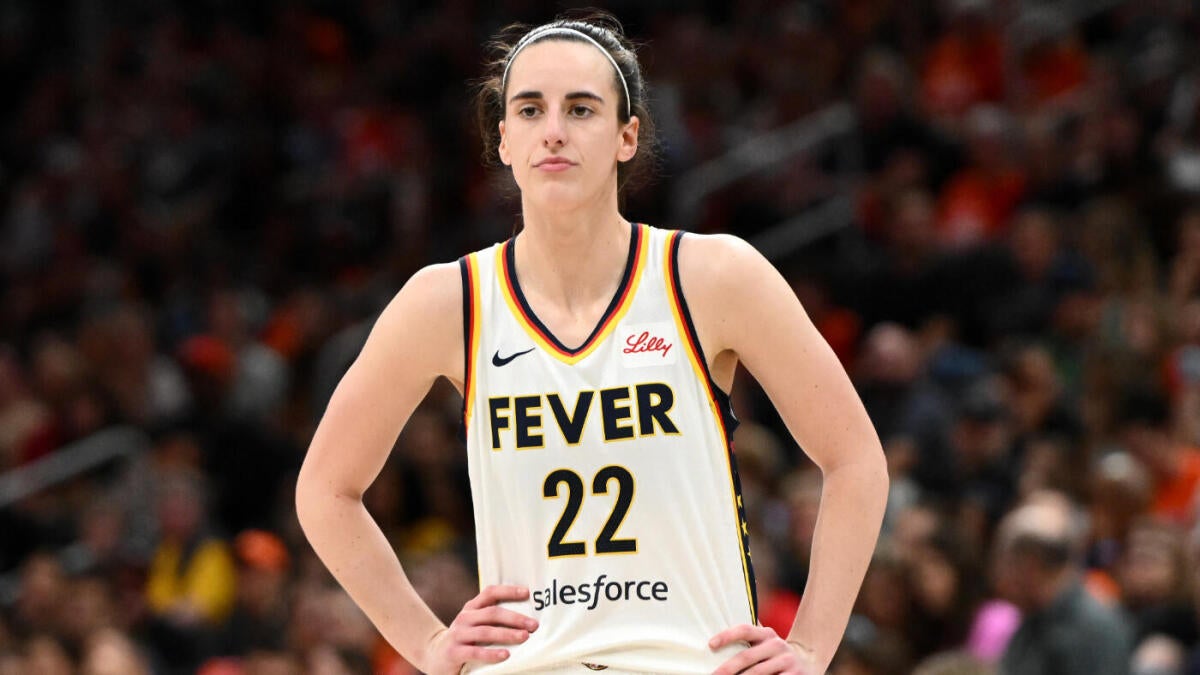The Impact of Injury: Caitlin Clark’s All-Star Absence and the Broader Implications
Introduction
The world of professional sports is a delicate balance of triumph and adversity. For Caitlin Clark, a rising star in the WNBA, this balance was recently disrupted by a groin injury that forced her to withdraw from the All-Star weekend festivities. This setback, while disappointing, offers a profound opportunity to examine the broader implications of player health, team dynamics, and the evolving landscape of women’s basketball. Clark’s absence from the All-Star Game and the 3-point contest not only affects her immediate performance but also raises critical questions about the physical demands placed on athletes and the league’s responsibility to ensure their well-being.
The Injury and Its Immediate Impact
Clark’s injury occurred during the final game before the All-Star break, a moment that saw her clutching her right groin after assisting on a basket. This was not her first encounter with physical challenges; she had previously battled two quad injuries and another groin strain, indicating a body already pushed to its limits. The immediate consequence was her withdrawal from the All-Star weekend, a significant blow as her presence was expected to be a major draw for the event. The All-Star Game and the 3-point contest are pivotal moments for the league, offering a platform to showcase the talents of its players and attract new fans. Clark’s absence risks dampening the excitement and exposure that these events typically generate.
The impact of her injury extends beyond the All-Star weekend. Coach Stephanie White has indicated that Clark is unlikely to play in the Indiana Fever’s first game after the break, against the New York Liberty. This means the Fever will be without their star player as they resume their season, potentially impacting their performance and momentum. The team has already experienced the challenges of playing without Clark, and her absence is undoubtedly felt both on and off the court. The Fever’s performance without Clark also affects fan morale and attendance. Clark’s arrival has triggered a surge in ticket sales and viewership, with sold-out arenas becoming the norm. Her absence risks dampening this enthusiasm, particularly among casual fans drawn to the WNBA by her star power.
The Ripple Effect: Team Dynamics and Fan Engagement
Clark’s injury has a multifaceted impact, extending from the immediate team dynamics to the broader fan engagement landscape. Within the Indiana Fever, her absence necessitates adjustments in strategy and player roles. Teammates must step up to fill the void in scoring and playmaking, potentially offering opportunities for other players to shine. However, there’s no denying the loss of Clark’s offensive firepower and court vision. Her ability to create scoring opportunities and control the game’s tempo is a significant asset to the Fever, and her absence leaves a noticeable gap.
The Fever’s performance without Clark also affects fan morale and attendance. Clark’s arrival has triggered a surge in ticket sales and viewership, with sold-out arenas becoming the norm. Her absence risks dampening this enthusiasm, particularly among casual fans drawn to the WNBA by her star power. The team must find ways to maintain their competitiveness and keep fans engaged despite the setback. This could involve highlighting the talents of other players, fostering a sense of community among fans, and emphasizing the team’s collective efforts rather than relying solely on Clark’s individual brilliance.
A Wake-Up Call: Player Health in the WNBA
Clark’s injury serves as a stark reminder of the physical toll exacted on WNBA players. The league’s schedule, often characterized by back-to-back games and limited recovery time, can increase the risk of injuries, especially for players like Clark who shoulder heavy workloads. This raises critical questions about player welfare and the league’s responsibility to ensure their long-term health. The WNBA’s schedule is demanding, with teams often playing multiple games in a short span, leaving little time for recovery and rehabilitation. This can lead to fatigue, increased injury risks, and long-term health issues for players.
There is a growing conversation around workload management, travel schedules, and access to top-notch medical care. The WNBA Players Association has been advocating for improvements in these areas, seeking to create a more sustainable environment for athletes. Clark’s injury may further fuel these discussions, prompting the league to re-evaluate its practices and prioritize player well-being. This could involve implementing stricter rest periods, improving travel conditions, and providing better access to medical resources. Ensuring the health and longevity of its players is crucial for the league’s success and sustainability.
Beyond the Court: Endorsements and Off-Court Presence
Caitlin Clark’s influence extends far beyond the basketball court. She has become a prominent figure in endorsements and off-court activities, representing major brands and engaging with fans through various platforms. While her injury sidelines her from playing, her off-court presence remains strong. She continues to be active in promotional campaigns and community events, maintaining her connection with fans and sponsors. Clark’s off-court activities are a testament to her star power and her ability to connect with audiences. Her endorsements and appearances help to elevate the profile of the WNBA and inspire young athletes, particularly young women, to pursue their dreams.
However, the injury also raises questions about the potential impact on her endorsement deals. Brands invest in athletes for their on-court performance and their ability to connect with audiences. While Clark’s popularity remains undeniable, her absence from games may affect her marketing value in the short term. It will be crucial for her and her representatives to navigate this period strategically, ensuring that her brand remains strong and relevant. This could involve leveraging her off-court activities, engaging with fans through social media, and participating in promotional events to maintain her visibility and appeal.
The Road Ahead: Recovery and Return
The timeline for Clark’s return remains uncertain, with Coach White describing her status as “day-to-day.” Groin injuries can be complex, requiring careful management and rehabilitation to prevent recurrence. Clark will likely undergo thorough evaluations and follow a strict recovery protocol to ensure she is fully healed before returning to the court. Patience will be essential for both Clark and the Fever organization. Rushing her back prematurely could lead to further complications and jeopardize her long-term health. The focus should be on a complete recovery, allowing her to return to the game at full strength and continue her promising career.
Clark’s recovery process will involve a combination of rest, rehabilitation, and gradual return to play. This may include physical therapy, strength training, and conditioning exercises to restore her mobility and strength. The Fever’s medical staff will play a crucial role in monitoring her progress and ensuring that she is ready to return to the court. The team’s support and understanding will be vital in helping Clark navigate this challenging period and return to her best form.
A Chance for Growth: The Bigger Picture
While Clark’s injury is undoubtedly a setback, it also presents an opportunity for growth and reflection within the WNBA. It underscores the importance of prioritizing player health and creating a sustainable environment for athletes to thrive. It also highlights the need for the league to develop strategies to manage the workload of its star players, ensuring their longevity and continued success. The WNBA is at a critical juncture, with increasing popularity and growing expectations. Ensuring the well-being of its players is essential for the league’s long-term success and sustainability.
Furthermore, Clark’s absence provides a platform for other players to step into the spotlight and showcase their talents. The WNBA is filled with talented athletes, and this could be an opportunity for new stars to emerge and capture the attention of fans. In the long run, this can contribute to the league’s overall growth and popularity. The league’s success is not solely dependent on individual stars but on the collective efforts of its players, coaches, and organizations. By fostering a supportive and inclusive environment, the WNBA can continue to thrive and inspire future generations of athletes.
Silver Linings
Caitlin Clark’s injury serves as a critical reminder that even in the most exhilarating narratives, challenges and setbacks are inevitable. It is during these moments that resilience, adaptability, and a renewed focus on well-being become paramount. While her absence is felt, it underscores the necessity for a holistic approach to athlete care and a shared responsibility in fostering a sustainable future for the WNBA. The narrative shifts, but the game continues, presenting opportunities for growth, reflection, and a deeper appreciation for the dedication and sacrifices of these remarkable athletes. The WNBA’s journey is one of progress and evolution, and Clark’s injury, while challenging, is a part of this ongoing story. By embracing these challenges and learning from them, the league can continue to grow and inspire, ensuring a bright future for women’s basketball.












